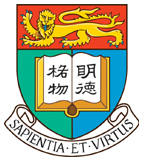Gu Wenda, born in 1955 in Shanghai, graduated from the China Academy of Arts in Hangzhou in 1981, and has been based in the USA since 1987. He is one of the pioneers of Chinese contemporary art, and has produced a distinguished body of work that has been displayed and exhibited at a wide range of prominent international values.
Gu’s work often draws on traditional forms, materials and techniques associated with China’s cultural identity and with its past, such as ink, tea, seals, engraved steles, landscape painting, and paper lanterns. By taking recognisable materials and giving them unrecognisable forms; dislocating and enlarging traditional objects; or juxtaposing signs of Chinese and non-Chinese culture, Gu has produced work that perpetuates China’s traditional arts, while simultaneously exploring the meanings of those traditions in a modern and interconnected world. He is, for this reason, an especially fitting artist to commemorate the centenary of the University of Hong Kong, a place were diverse cultural and scholarly traditions coexist and interact.
Since very early in his career, Gu has demonstrated a pronounced interest in language, and in its written and visual representation – in particular, by Chinese ideographs. In the 1980s, he presented exhibitions of seemingly traditional ideographs that, on closer inspection, turned out to be invented, illegible, or ‘false’. Gu has periodically returned to the use of ideographs to explore the intersection of novelty, tradition, meaning and identity.
In 1993, Gu began a project entitled ‘Forest of Stone Steles: Retranslation & Rewriting Tang Poetry’ which he exhibited in Hong Kong in 2004, and in Xi’an in 2005. ‘Forest of Stone Steles’ is a meditation on the interpretation and interpenetration of cultures. The installation comprises rows of steles engraved with Chinese characters. To obtain these inscriptions, Gu selected lines of Tang poetry, translated them literally into English, then transliterated the sound of the English words into Chinese characters. For example, 月光 is translated into English as moon light, which, transliterated into Chinese characters, becomes 虻癩忒 (mang lai te), a phrase which signifies horsefly leprosy error. By combining sequences of ‘incorrectly’ translated poetry, Gu transformed canonical Tang poems into sequences of uncanny verbal images. The resulting characters were then engraved onto steles in traditional calligraphic styles, a form that evokes the antiquity and longevity of Chinese history and culture, now bearing meanings that have been filtered and transformed through another language, and through contemporary ways of manipulating poetic idioms.
‘Forest of Stone Steles’ will form the basis of Gu’s collaborative work with students and alumni in HKU. You can see pictures, and read a fuller description of this installation at Gu Wenda’s website (under Image Galleries/Installation). You can also download a pdf describing it here.

